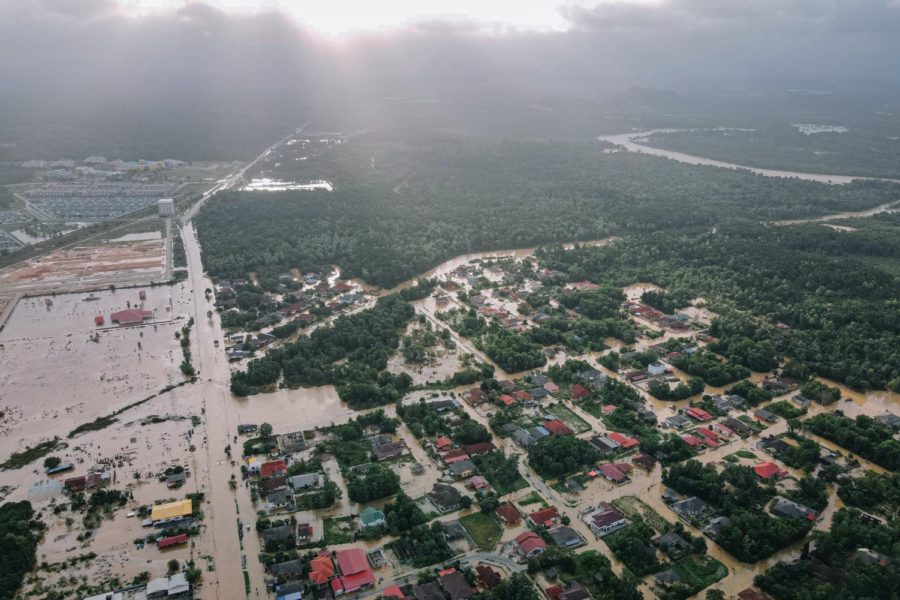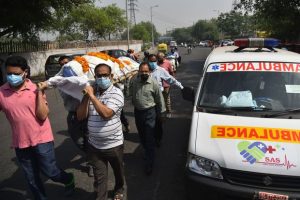Pakistan works to recover from worst flood in country’s history
October 5, 2022
Since June, Pakistan has been devastated by heavy monsoons and melting glaciers that resulted in a series of dangerous floods. Nearly one third of the nation is underwater and millions of victims have been displaced since. Over the month of September, Pakistan has declared a state of emergency.
Pakistan isn’t new to flooding. Yearly monsoon seasons are considered normal in their region, but never to this extreme with breaking glacial lakes and flash floods overtaking villages. An estimated 1,500 have died, and nearly 33 million people have been displaced throughout Pakistan. This is said to be the worst flood ever seen in Pakistan and one of the most terrorizing in world history.
According to Nature, a multitude of factors played into this ongoing disaster. It began with unimaginable heat waves that lasted for prolonged periods of time.
“These were not normal heat waves—they were the worst in the world. We had the hottest place on Earth in Pakistan,” Malik Amin Aslam, the country’s former minister for climate change, said.
Earlier this year, meteorologists had also given a warning about abnormally high monsoon rain levels. As water levels increased and the heat melting glaciers on mountain tops got pushed into the Indus river, there was a vast discrepancy between past years’ water levels and this year’s. All factors point to climate change as the villain to blame.
Despite Pakistan being one of the lowest carbon emitting countries, temperatures have increased over the last 40 years. Critics have concluded that the immense heat was the starting catalyst that began these floods and most researchers and public officials claim human induced global warming is intensifying downpours. All regions in Pakistan have received anywhere between three to five times their normal average rainfall during the monsoon this year because of it.
Unfortunately, these unprecedented floods have had incredibly harmful impacts and have left a trail of injured and displaced people. According from a statistics report from reuters.com, on Sep. 15 the the death toll stands at 1,486, of which 530 are children.
In the Southern Sindh province, one of the regions that have been affected the most by the floods, thousands of homeless people have fashioned themselves a home by sleeping by the side of elevated highways to protect themselves from the water.
“We have been buying tents from all the manufacturers available in Pakistan,” Sindh Chief Minister Syed Murad Ali Shah said.
Victims are being put in inhabitable standards, such as no clean drinking water, no food and destroyed homes, roads and villages. Power line electrocution is a new hazard the people of Pakistan have to be cautious of. Though this flood started small, its everlasting damages have affected 5.06 million people and destroyed nearly 460,000 homes among 15 districts in Sindh, Balochistan and Punjab.
If these issues weren’t already extensive, a new obstacle emerged. Regions are being plagued with diseases consisting of malaria, dengue fever and skin problems.
“Stagnant water is giving rise to the water-borne diseases, millions of people are living under open sky,” Prime Minister Shahbaz Sharif said in a recent address to the Shanghai Cooperation Organization (SCO) summit.
In rural areas where poverty is dominant, they are especially vulnerable to waterborne diseases permeating throughout the streets. The UNHCR said an estimated 16 million children have been affected by the floods and at least 3.4 million of them are in need of immediate life support. With a multitude of issues arising officials are struggling to respond to all the victims that remain in need of help.
Sherry Rehman, Pakistan’s minister of climate change, said in the Morning Edition,“All three arms of the military have been deployed, and we [they] are still overstretched. The government is working to fund flood relief aid and provide humanitarian aid like tents and food packages — and is also hoping to raise $160 million in emergency funds through an appeal with the United Nations.”
Since the declared emergency, the European Union has pledged financial support and the U.S alone has offered $30 million in different forms of aid.
Over the course of the last three months, many reputable victim relief organizations have stepped up and offered to partner with the government to provide aid. The Hidaya Foundation, a Pakistani organization working locally to offer temporary homes, delivers food and medicine, and works to garner donations to help rebuild infrastructures destroyed by the flood. UNICEF is partnering with the government to deliver purified water in trucks on the roadside, as disease and bacteria coming from dirty water is their main area of focus.
Similarly, the Pakistan Red Crescent Society is also attempting to give out purified water throughout the streets of Pakistan. The World Food Program has been seen offloading flour throughout villages. Many organizations are finding different approaches and tackling down each issue to the best of their ability.
Although water levels have slightly decreased in the past month, scientists estimate anywhere between two to six months before floods recede. Pakistan’s next issue is to rebuild. With an estimated $30 billion worth of damage, Pakistan is in dire need of aid and donations. Since it is possible that Pakistan may fall victim to heavy floods again, many organizations are trying to rebuild more climate resilient structures so they are unlikely to be impacted by environmental risks.
While the protection of Pakistani victims is the main priority for the government, rebuilding and rebuilding better is their next.




